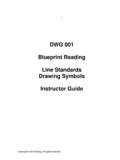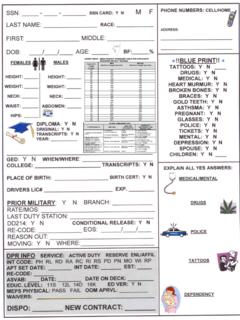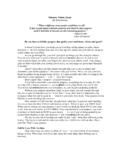Transcription of THE NO FAIL WORKOUT SYSTEM - btblueprint.com
1 THE NO fail . WORKOUT SYSTEM . Complete Physique Transformation Program By Sean Nalewanyj - Copyright & Disclaimer - Before beginning any new exercise, nutrition or dietary supplement program you should consult a physician first. The information presented herein is not meant to treat or prevent any disease or to provide the reader with medical advice. If you are looking for specific medical advice then you should obtain this information from a licensed health-care practitioner. This publication is intended for informational use only. Sean Nalewanyj and will not assume any liability or be held responsible for any form of injury, personal loss or illness caused by the utilization of this information. The individual results obtained from the use of this program will vary from person to person and we make no guarantee as to the degree of results that you will personally achieve. This publication is fully copyrighted and does not come with giveaway or resale rights.
2 You may not sell or redistribute this report. It is reserved solely for registered Body Transformation Blueprint Members. Copyright and illegal distribution violations will be prosecuted. - All Rights Reserved INTRODUCTION. The No- fail WORKOUT SYSTEM is an intelligently structured, step-by-step training plan designed to take you to your ultimate physique goals in the most effective and efficient way possible. Here's how to get started . First, make sure to read through the WORKOUT Guidelines. This section will give an overview of exactly how each individual WORKOUT should be performed. Next, make your way through the step-by-step No- fail WORKOUT Plan. This section is broken down into 3 individual training phases based on your experience level and outlines which days you should train on, the exact exercises, sets and reps to perform, along with a list of notes for each WORKOUT that provide additional information.
3 Finally, read through the No- fail Cardio Guidelines. Depending on your individual goals, some specific cardio guidelines will be outlined for you that can be used alongside your weight training routine. Let's get N0- fail WORKOUT GUIDELINES. Before you get started, make sure to read over these important WORKOUT guidelines 1) Before you begin any of the assigned workouts, you need to have a proper understanding of how each exercise is performed in order to maximize muscle stimulation and reduce the chances for injury. Each exercise in the plan is clickable and will take you to the Video Exercise Database providing a full motion video, written description and list of important form cues for that particular lift. 2) If you're a beginning lifter who is relatively new to weight training, make sure to start off on the cautious side by selecting lighter weights in order to get a feel for each exercise first.
4 Once you have the correct technique nailed down, you can then begin gradually increasing the weights. After a few weeks you should be settled into things and will have found the appropriate weights for yourself in order to land in the proper rep ranges at the proper intensity level. 3) Each WORKOUT will begin with a brief warm up routine to prepare your body for the work ahead, improve joint mobility/lubrication and reduce the risk for injury. Each WORKOUT will specify the appropriate warm up sequence to perform, and you'll find a breakdown of each sequence at the end of this PDF. 4) Aim to perform each set in your WORKOUT about 1 rep short of muscular failure. This means that you should continue your set until the point where, if you were to give an all-out 100%. effort, you would only be able to complete 1 more rep using proper form. The last rep of each set should be quite challenging, but overly-slow grinder reps that you're just barely able to squeeze out should be avoided.
5 Again, you'll get a better handle on this after a few weeks of training if you're a complete beginner. 5) Always write down your workouts in detail by recording the exact weight lifted and the number of reps executed for every exercise throughout the session. The next time you enter the gym to perform that same WORKOUT , you should be placing 100% of your focus on improving upon your previous performance by adding slightly more weight (typically around 5-10 pounds on bigger compound lifts and pounds on smaller isolation lifts), or performing more reps with the same weight. The basic approach should be to train for additional reps until you're able to hit the upper end of the given rep range for an exercise, at which point you can increase the weight on the following WORKOUT . 6) After you have completed a given set, you should only perform your next set when you feel that you are fully recovered both physically and mentally and can perform that set with maximum strength and focus.
6 There is no concrete rest interval in between sets, as it will vary from exercise to exercise. As a general guideline though, you should typically be resting around minutes in between sets, with more rest being required the more demanding the exercise is. For example, a set of squats may require 3 full minutes of rest while a cable curl may only require minutes. 7) Your workouts can last as long as you need them to in order to complete all of the assigned work, as long as your overall training intensity, energy and focus has not significantly declined. In most cases this will land you in a range of about 60-90 minutes per session. 8) On the positive portion of each repetition, lift the weight as fast as you can while still maintaining proper form. On the negative portion of the repetition, lower the weight under control in 2-3 seconds. 9) Make sure to place equal focus and intensity on all muscle groups.
7 You should not be favoring certain muscles over others, but instead should focus on developing your entire physique as equally as possible. Only when you become more advanced and have built up a significant amount of muscle and strength should muscle prioritization come into play in order to bring up potentially lagging muscle groups. 10) Muscle pump, muscle burn and muscle soreness are not indicators of a successful WORKOUT . The success of your WORKOUT should only be gauged by how well you execute the principle of intensity (training about 1 rep short of muscular failure) and progression (adding more weight to each exercise over time). As long as you're accomplishing these two things and are following the workouts as outlined, you are on the right track. 11) Injury prevention should always be treated as a primary concern. Keep your joints and connective tissues healthy by following the warm up routines given, lifting within your own limits, monitoring your intensity levels, using proper form at all times and avoiding overtraining by sticking to the workouts as outlined.
8 12) After 8-10 continuous weeks of training, take 1 full week off from the gym. This will allow your body and joints to fully recuperate and will prevent overtraining. You may still perform cardio on your week off. Okay, let's dive into the actual concrete WORKOUT plan . THE N0- fail WORKOUT PLAN. There are 3 individual training plans included that have been broken down into separate phases . PHASE 1: If you're a complete beginner, or someone who does have gym experience but with minimal results achieved so far, this is where you'll want to begin. This phase utilizes a full body training approach performed 3x per week and should be followed for roughly the first 6-12 months of training. PHASE 2: If you've completed Phase 1 or already do have a modest amount of training experience under your belt (around 6-12 months) with decent initial newbie gains to show for it, you can move on to Phase 2.
9 This phase uses an upper body/lower body training split done 3-4x per week and should also be followed for roughly another 6-12 months. PHASE 3: If you've completed both Phase 1 and 2, or if you're starting this program having already trained properly and consistently for around 1-2 years, Phase 3 will be next. This phase uses a Legs/Push/Pull training split performed 4-5x per week, and for those whose primary goal centers around building muscle or losing fat, this style of training can essentially be used indefinitely until or unless you want to switch things up for variety. Important Note Before moving on, keep in mind that when it all comes down to it, any of these 3 structures will still be effective regardless of your individual training experience. As long as a given training plan hits each muscle group at least once per week using the proper exercises, intensity and with ongoing progression in weight/reps, it will ultimately produce significant gains in muscle size and strength over the long term.
10 For example, a complete beginner could still train using a Phase 3 legs/push/pull structure and see great progress, and even an advanced lifter could achieve noteworthy results using a full body Phase 1 style. All of these training styles work, however, the No fail WORKOUT SYSTEM has been specifically structured in order to optimize progress and to help you achieve the fastest results possible based on your individual situation. If you do want to jump forward or back to a different phase based on personal preference or because it fits better into your schedule or lifestyle, that's ultimately okay. However, if you want to fully maximize your results then start with the particular phase that lines up with your current experience level and then progress from there. Of course, if you have any questions or need help with any of this, just shoot me an email and I'll be happy to help. PHASE 1 TRAINING PLAN.





